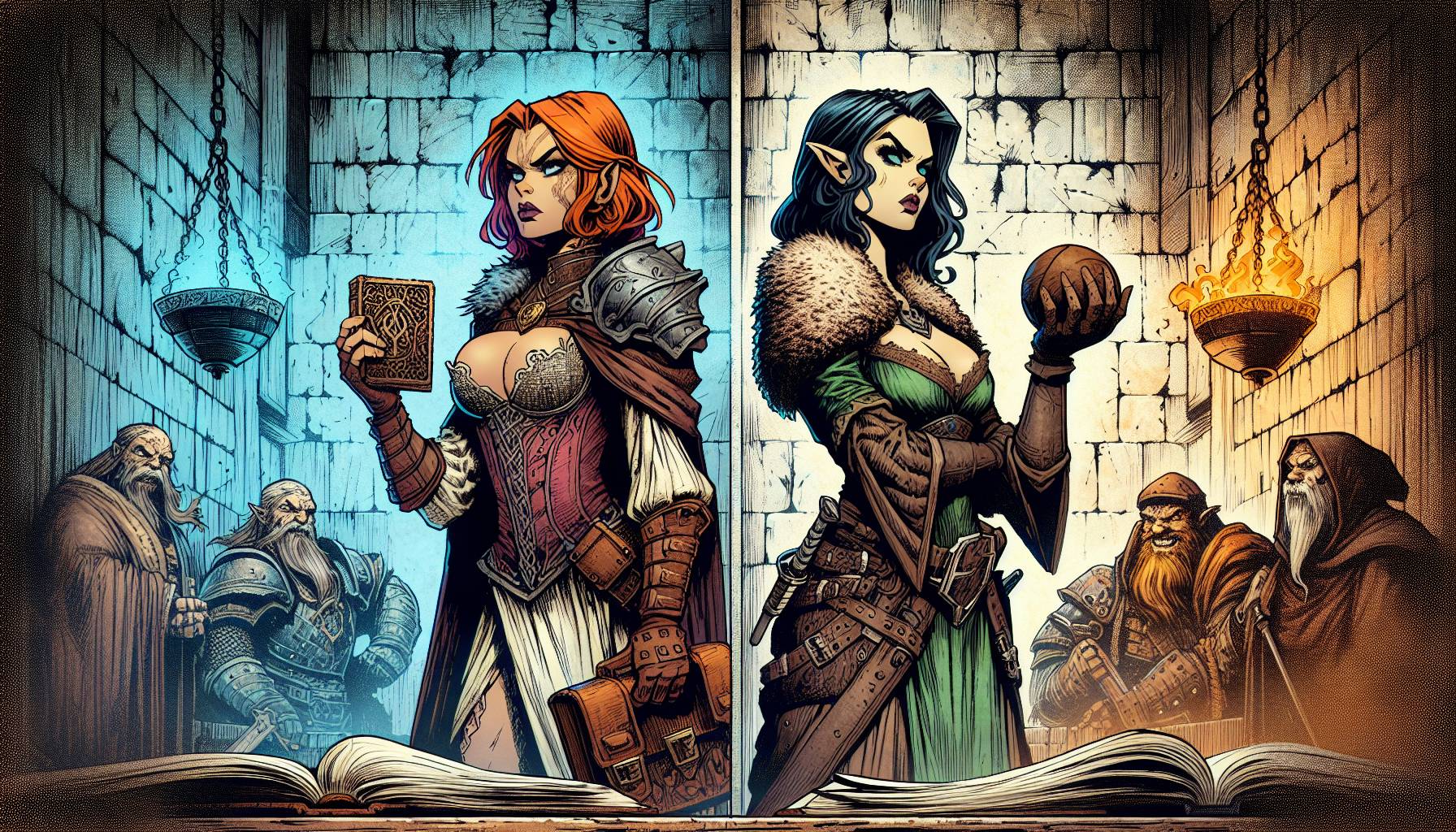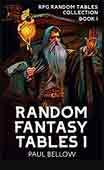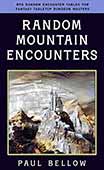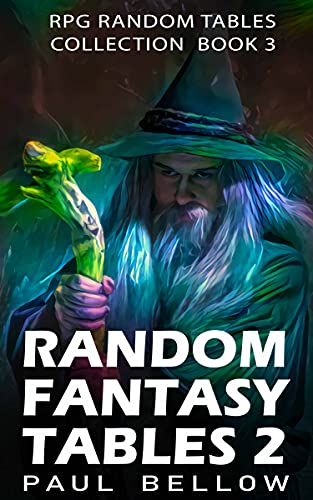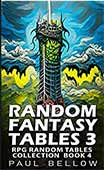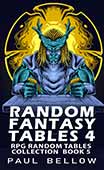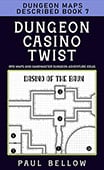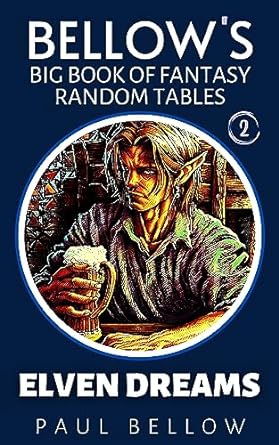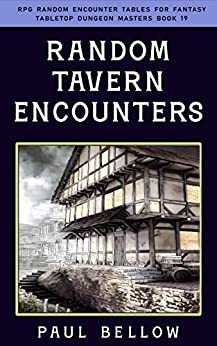When it comes to Dungeons & Dragons (any edition of D&D), alignments serve as a compass for character behavior, delineating a spectrum where order clashes with chaos. This eternal struggle not only shapes individual actions and narratives but also provides fertile ground for hilarity. Whether it’s a paladin staunchly defending a code of conduct or a rogue inventively interpreting laws to suit their needs, the comedic potential inherent in this dichotomy is boundless. Alignments add layers to storytelling, allowing players to explore the absurdities and nuances of their characters’ philosophies, making the clash between law and chaos an essential tool for immersive gameplay.
Embarking on a journey through alignments is akin to walking the tightrope between heroism and anarchy. The rigid lawful character juxtaposed against the capricious chaotic one forms an essential narrative dichotomy that can turn any campaign session into a laughter-filled romp. When executed well, the jesting interplay between these polarities can not only drive the plot forward but also create unforgettable moments of comic relief. So, buckle up as we delve into the comedic depths of D&D alignments, where rules are meant to be followed—or hilariously bent.
The beauty of D&D’s alignment system lies in its ability to inform character development and relationships dynamically. It offers players a tool to craft characters whose motivations are woven into the fabric of the game world. Whether a character champions the cause of order or revels in the spontaneity of chaos, the alignment spectrum invites players to experiment, sparking interactions that can swing from dramatic to comical in the blink of an eye. As we unravel the intricacies of lawful and chaotic alignments, prepare to uncover how these fundamental forces can lead to gameplay that is both richer and uproariously entertaining.
Alignments in D&D are not just arbitrary labels; they are narrative devices that breathe life into characters, providing context for their actions and decisions. By exploring the multifaceted struggles between law and chaos, players and Dungeon Masters (DMs) alike are given the chance to craft stories that captivate and amuse. Whether you’re roleplaying a stalwart defender of justice or a whimsical agent of disorder, the alignment system promises a treasure trove of comedic opportunities—an open invitation to embrace the absurdity and creativity that define the world of D&D.
Understanding Alignment Basics
At its core, the D&D alignment system categorizes characters along two axes—law vs. chaos and good vs. evil—forming a grid of nine possible alignments. Each alignment offers a lens through which characters view the world and interact with it, influencing motivations and relationships. For instance, a lawful good paladin might strive for justice and order, while a chaotic neutral bard revels in personal freedom and spontaneity. By choosing an alignment, players gain a framework for understanding their character’s worldview, setting the stage for the unfolding drama and comedy of their adventures.
Alignments are more than mere philosophical labels; they are powerful storytelling tools that can shape the narrative arc of a campaign. They serve as a guide for character development, offering insights into how a character might react to different situations and what drives their decisions. Humor often arises from the juxtaposition of alignments: consider the bumbling cleric who clumsily adheres to their deity’s strictures or the reckless rogue who turns laws into a personal suggestion box. Such scenarios provide rich opportunities for character-driven comedy.
Try my AI Tabletop RPG generators...and an extensive library of content!
Beyond individual motivations, alignments influence relationships between characters and with the world around them. Allies and adversaries alike are colored by their alignment, adding layers to interactions that spark conflict, cooperation, or comedic hijinks. Imagine a knight and a rogue locked in debate over the proper way to distribute loot, or a wizard who insists on observing every arcane protocol while their barbarian friend smashes first and asks questions later. These contrasting perspectives set the stage for dynamic storytelling, with alignments acting as catalysts for humor and camaraderie.

The Lawful Spectrum: From Strict Adherence to Creative Interpretation
Being lawful in D&D means adhering to a set of principles, be they societal laws, personal codes, or religious tenets. However, the degree of adherence varies significantly within the lawful spectrum. On one end, you might find a paladin who follows their doctrine to the letter, ensuring every action aligns with their strict moral code. On the other, a rogue might identify as lawful through their own skewed interpretation of personal honor among thieves. This spectrum allows for diverse characterization, offering comedic potential through both staunch adherence and playful interpretation of rules.
Consistency, or a humorous lack thereof, can drive interactions that are rife with comedic potential. A character’s adherence to the lawful spectrum can lead to hilariously rigid behavior or amusingly creative interpretations of the “rules.” Consider the straight-laced knight who insists on reading every clause of a contract before combat, or the playful rogue who selectively follows laws that best suit their current whim. These behaviors, while motivated by a desire for order, can often result in memorable and laughter-inducing scenarios that enhance the gaming experience.
The key to using lawful behavior as a comedic device lies in respecting the dynamics of the player group. While it can be tempting to craft a character who strictly adheres to or creatively interprets laws for laughs, it’s important to ensure that these actions don’t disrupt the overall flow of gameplay. By striking a balance, players can enjoy the humorous side of lawful behavior without stepping on others’ toes, creating an environment where character quirks contribute to a shared narrative rich with comedic potential.
⚔️ Fantasy RPG Random Tables Books
Make life as a Gamemaster easier…
If you play Dungeons & Dragons, Pathfinder, or other fantasy RPGs, this
RPG random tables series
is packed with encounters, NPCs, treasure, and more. Available in eBook or print—either way, you’ll have a wealth of adventure ideas at your fingertips.
Encouraging players to explore the lawful spectrum invites the kind of absurdity that makes D&D sessions memorable. Whether it’s a bard singing detailed legalese or a fighter drafting etiquette manuals for battle, the comedic gold found in lawful antics promises both delightful roleplaying and engaging storytelling. As long as players remain mindful of party dynamics, the rigid pursuit or flexible interpretation of order can serve as a powerful tool for humor and narrative development.
Embracing Chaos: Unpredictability as a Storytelling Tool
Chaos in D&D thrives on unpredictability, serving as both a foil and complement to lawful actions. Chaotic characters defy expectations and revel in spontaneity, often leading to unexpected outcomes that enrich storytelling. By embracing chaos, players open the door to a world of improvisation, where the unexpected redefines narrative paths and injects humor into any situation. Whether through a bard’s whimsical decision to charm a dragon or a sorcerer’s impromptu explosion of magic, chaos inspires creativity and soundboards for comedic brilliance in gameplay.
The humor of chaotic antics often lies in their unpredictability. Characters who embody chaos are masters of surprise, using their capricious nature to derail the best-laid plans. Yet, within this unpredictability lies the opportunity for rich storytelling and character development. A chaotic barbarian’s unpredictable battle tactics may cause allies to scramble, but they also reveal insights into the character’s fiery spirit and fierce allegiance to personal freedom. These moments, when shared among players, create bonds woven from shared laughter and astonishment.
- Deciding to court the villain’s daughter mid-conflict.
- Swapping everyone’s weapons just before a major battle.
- Convincing the party’s horses to join them in song.
- Suggesting rock-paper-scissors to resolve disputes with a lich.
- Adding a “free hugs” clause to a peace treaty.
- Adopting a goblin tribe as unofficial party mascots.
- Announcing themselves as royalty in every new city.
- Training a pseudodragon to steal lunch money from foes.
- Setting up a puppet show for the enemy camp.
- Hosting an impromptu dance-off to settle grudges.
- Giving the party’s map to a passing owl as a “gift.”
- Collecting hats from defeated foes for a “fashion statement.”
- Declaring each tavern lady a goddess to their companions.
- Naming the party’s weapons and insisting they must be “introduced” to every NPC.
When leveraging chaotic behavior as a storytelling tool, it’s essential to maintain a balance between chaos and inter-party cooperation. While chaos adds intrigue and humor, unchecked pandemonium can disrupt group cohesion and derail narrative flow. To avoid this, players should communicate openly about the extent of chaotic behavior and its potential impact on the story. By setting agreed-upon boundaries, chaos can be harnessed to enhance gameplay without dissolving into total anarchy.
Ultimately, the beauty of chaos lies in its capacity to transform gameplay into an unpredictable, laughter-filled adventure. By focusing on shared enjoyment and weaving chaos into the narrative, players can enrich their D&D experiences with moments that challenge expectations and elicit collective amusement. When managed thoughtfully, the chaotic antics of characters become indispensable elements of storytelling, adding a spirited layer of humor to any campaign.
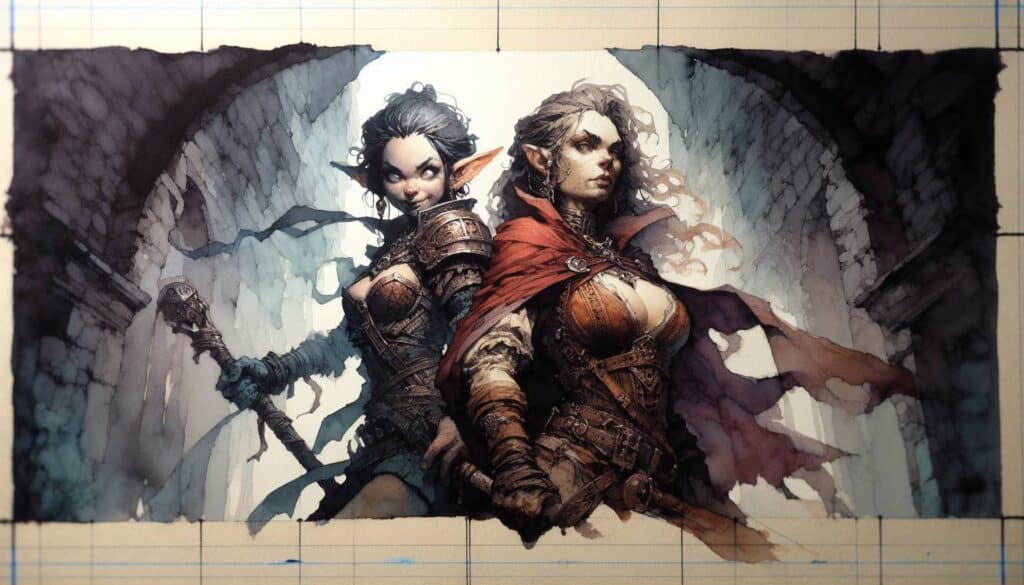
Lawful vs. Chaotic Dynamics in a Party
The interplay between lawful and chaotic characters within a party creates a dynamic tapestry of interactions. These characters often find themselves at odds due to their differing worldviews, yet it’s this very opposition that can lead to the most entertaining and engaging scenarios. A lawful character’s insistence on following protocol might clash humorously with a chaotic character’s impromptu plans, leading to both conflict and camaraderie. Through these interactions, characters deepen their relationships, showcasing both the tension and the humor that define D&D alignments.
| Lawful Scenario | Potential Humorous Outcome |
|---|---|
| Insisting on a detailed battle plan. | Chaotic ally charges in, rendering the plan moot. |
| Negotiating a peace treaty with formality. | Chaotic bard adds “free hugs” clause. |
| Adhering to curfews in a city. | Chaotic rogue sneaks everyone out for an adventure. |
| Enforcing code of silence during a heist. | Chaotic sorcerer starts a loud distraction. |
| Collecting taxes or tolls for a quest. | Chaotic druid barters using forest mushrooms. |
| Insisting on proper etiquette at court. | Chaotic barbarian challenges nobles to arm wrestle. |
| Obeying strict temple protocols. | Chaotic cleric claims divine inspiration for dance. |
| Following legal procedures to acquire aid. | Chaotic warlock makes under-the-table deals. |
| Observing a strict diet during travel. | Chaotic ranger introduces wild “delicacies.” |
| Conducting solemn religious rituals. | Chaotic bard introduces interpretive dance. |
The comedic potential of these interactions is vast. The lawful character’s earnest adherence to rules often clashes wonderfully with the chaotic character’s irreverence, creating scenes ripe for laughter. Their conflicting approaches can result in unexpected alliances, as when a lawful paladin begrudgingly appreciates a chaotic rogue’s knack for improvisation in the face of danger. These moments of shared understanding and humor serve to strengthen party dynamics, fostering character growth while encouraging players to embrace the tension inherent in their differing alignments.
By exploring the dynamic tension between lawful and chaotic characters, players have the opportunity to craft richer stories and develop their characters in unexpected ways. When played with a spirit of mutual respect and an emphasis on humor, these interactions become a source of joy and creativity, enhancing the overall experience for everyone involved. As players navigate the delightful chaos of alignment-driven dynamics, they unlock the potential for narratives that are as heartwarming as they are entertaining.
Lawful Good to Chaotic Evil: Alignments Along the Morality Scale
When morality intersects with law and chaos in D&D, it creates a rich tableau for character exploration. Each alignment on the morality scale comes with its own set of tropes, offering opportunities for both humor and depth. The lawful good cleric, for instance, embodies piety and altruism, while the chaotic evil warlock delights in anarchy and chaos. By understanding these tropes, players can exaggerate or subvert them for comic effect, enriching both character arcs and party dynamics.
| Alignment | Typical Traits | Humorous Exaggeration/Subversion |
|---|---|---|
| Lawful Good | Pious, altruistic | Crusades for ethically sourced banditry. |
| Neutral Good | Pragmatic, benevolent | Only aids causes with catchy theme tunes. |
| Chaotic Good | Rebellious, kind-hearted | Plants flowers after toppling regimes. |
| Lawful Neutral | Objective, rule-bound | Invents bureaucracy for fun. |
| True Neutral | Impartial, balanced | Flips a coin for every moral decision. |
| Chaotic Neutral | Unpredictable, independent | Rolls dice to decide breakfast. |
| Lawful Evil | Calculating, tyrannical | Insists on monologues before conquering. |
| Neutral Evil | Self-serving, ruthless | Hosts villainous dinner parties. |
| Chaotic Evil | Destructive, anarchic | Creates chaos by knitting warm scarves. |
| Lawful Good Bard | Entertaining, righteous | Sings exclusively about tax reform. |
| Chaotic Evil Wizard | Cunning, destructive | Casts spells to rearrange others’ wardrobes. |
| True Neutral Druid | Nature-focused, balanced | Meditates to avoid all decisions. |
By playing with these alignments and their associated traits, players can craft characters whose arcs and relationships are not only informed by morality but are also imbued with humor. Whether it’s an altruistic paladin trying to outdo an evil warlock’s monologues or a pragmatic ranger befriending creatures for strategic hugs, the morality scale offers a framework for endless creativity and amusement.
Embracing morality as a facet of character development encourages players to think more deeply about their characters’ motivations and interactions. By exploring the nuances of each alignment, players can create narratives that are both meaningful and comical, breathing life into the shared stories that define their campaigns.
⚔️ Fantasy RPG Random Tables Books
Make life as a Gamemaster easier…
If you play Dungeons & Dragons, Pathfinder, or other fantasy RPGs, this
RPG random tables series
is packed with encounters, NPCs, treasure, and more. Available in eBook or print—either way, you’ll have a wealth of adventure ideas at your fingertips.
Ultimately, the interplay of morality, law, and chaos within D&D enriches the fabric of the game, offering players a powerful toolkit for crafting characters and stories that resonate with depth and humor. By embracing the full spectrum of alignments and their associated tropes, players can create dynamic arcs that are as engaging as they are entertaining.
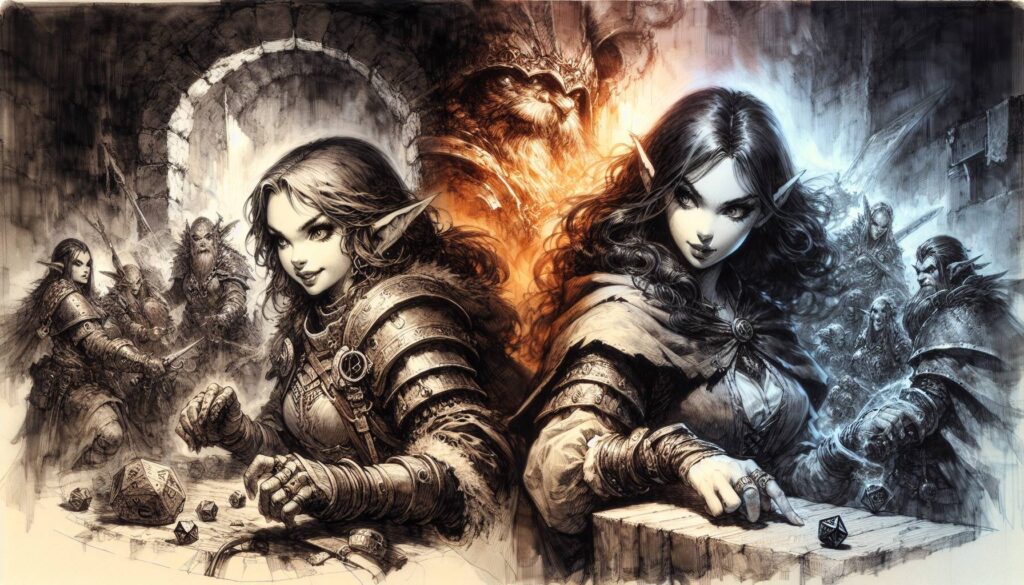
Alignment in Different Campaign Settings
In D&D, the expression of alignments can vary significantly depending on the campaign setting. High fantasy worlds might see alignments manifesting as archetypal forces battling for dominance, while steampunk settings could emphasize the clash between innovation and tradition. In dystopian worlds, alignments may be challenged by oppressive systems, whereas cosmic horror settings might blur the lines between morality and madness. Each setting provides a unique backdrop for exploring the nuances of alignment, adding depth and comedy to character interactions.
| Setting | Alignments | Example Character Archetypes |
|---|---|---|
| High Fantasy | All alignments | Lawful Good Paladin, Chaotic Evil Sorcerer |
| Steampunk | Lawful Neutral, Chaotic Good | Inventor Artificer, Rebellious Rogue |
| Dystopian | Neutral Evil, Chaotic Neutral | Ruthless Enforcer, Underdog Rebel |
| Cosmic Horror | Chaotic Neutral, True Neutral | Mad Scientist, Stoic Investigator |
| Western | Neutral Good, Lawful Evil | Sheriff, Outlaw Leader |
| Cyberpunk | Chaotic Good, Lawful Neutral | Hacktivist, Corporate Agent |
| Mythic/Legendary | Lawful Good, Chaotic Evil | Noble Hero, Trickster Deity |
| Post-Apocalyptic | Neutral, Chaotic | Survivalist Ranger, Anarchist Barbarian |
| Gothic Horror | Neutral Evil, Chaotic Neutral | Brooding Vampire, Eccentric Scholar |
| Ancient Civilization | Lawful, True Neutral | Philosopher, Oracle |
| Pirate/Nautical | Chaotic Good, Neutral Evil | Rebel Captain, Ruthless Buccaneer |
| Fairytale | Neutral Good, Chaotic Evil | Kind-Hearted Prince, Wicked Witch |
By examining these various settings and their associated alignments, players can delve deeper into their characters’ motivations while discovering new comedic opportunities. Each alignment reflects not just a character’s intentions but how these intentions play out in diverse environments. Whether battling in a high fantasy realm or navigating the moral ambiguity of a dystopian society, the dynamic nature of alignment provides a rich tapestry for storytelling and humor. Exploring character archetypes unique to each setting can further enhance the comedic potential, leading to unforgettable adventures shaped by the diverse interplay of order and chaos.
Alignments adapt to the themes and tone of the campaign setting, offering players opportunities to explore their implications in diverse contexts. In a high fantasy setting, alignments may be grandiose, with clashes between good and evil echoing through realms. Meanwhile, a steampunk campaign may emphasize the tension between lawful structures and chaotic innovations, creating a fascinating playground for character development and humorous encounters.
To adapt alignment expression effectively, players and DMs can incorporate setting-specific elements that enhance both humor and depth. This might involve creating distinct cultural norms associated with certain alignments, or designing scenarios where alignment-based decisions are crucial to the plot. By tailoring alignment expression to the setting, players can deepen their immersion while mining comedic gems that arise from the unique challenges and opportunities each world presents.
Ultimately, the key to successful alignment expression in different campaign settings lies in creativity and collaboration. By embracing the diversity of alignments and their interplay with the setting, players can craft narratives that resonate on multiple levels, weaving humor and meaning into the fabric of their campaigns.
Alignments and Player Agency
Balancing alignment adherence with player agency in D&D is essential for maintaining harmony and enjoyment at the table. While alignments offer a framework for character behavior, overly rigid interpretations can stifle creativity and lead to frustration. To foster a dynamic and engaging experience, players and DMs should aim for a flexible approach that encourages roleplaying nuances while respecting individual player expression.
Try my AI Tabletop RPG generators...and an extensive library of content!
Maintaining player freedom while adhering to alignment can lead to humor, as characters navigate the complexities of their moral compass in unexpected ways. A lawful character might occasionally bend the rules for a good cause, while a chaotic character might find themselves unwittingly fulfilling the law’s purpose. These moments of contradiction and growth allow characters to develop organically, enriching the storytelling experience.
- Encourage players to interpret alignment creatively.
- Introduce scenarios that challenge alignment assumptions.
- Allow alignment shifts as part of character development.
- Use alignment as a tool, not a constraint.
- Encourage characters to question their moral compass.
- Explore the gray areas between alignments.
- Involve players in crafting alignment-driven plot twists.
- Recognize alignment as fluid, not static.
- Balance alignment-driven actions with party cohesion.
- Foster open dialogue about alignment expectations.
- Introduce humor through alignment contradictions.
- Encourage alignment-inspired improvisation.
- Prioritize fun over rigid alignment adherence.
The goal is to use alignments as a springboard for creative roleplaying rather than a set of shackles that restrict character expression. By allowing flexibility and embracing humor derived from alignment-based contradictions, players can enjoy richer and more immersive gameplay that celebrates both individual agency and collective storytelling.
To prevent alignment-based conflicts from detracting from game enjoyment, open communication is key. Players should feel comfortable discussing their alignment choices and the potential impact on party dynamics. By fostering an inclusive environment that welcomes diverse interpretations of alignment, players can collaborate effectively to craft narratives that resonate with humor, depth, and creativity.
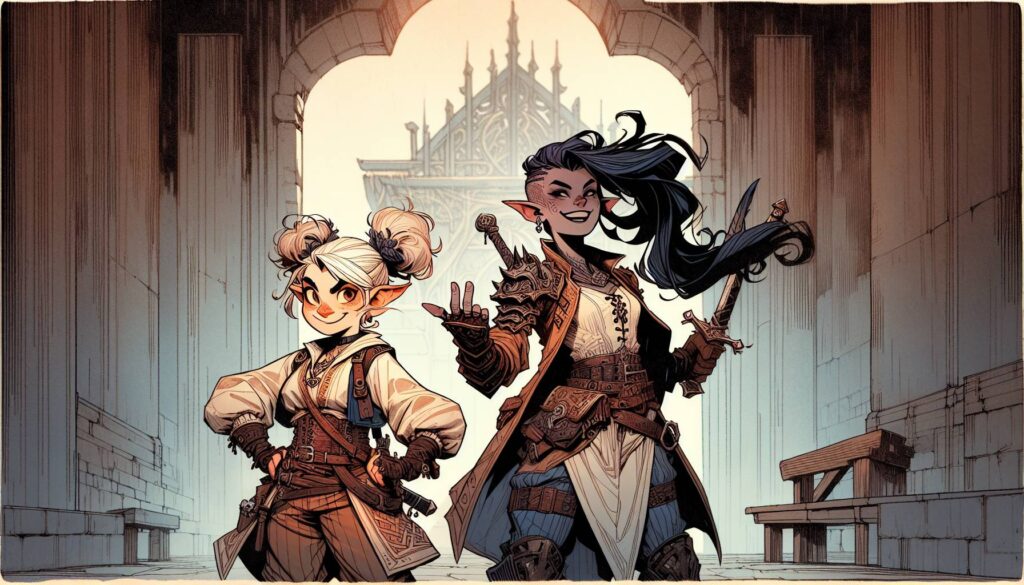
Final Thoughts on Roleplaying Alignments
As we conclude this guide on roleplaying alignments in D&D, it’s important to remember that alignments are not shackles but springboards for creativity. They provide a foundation for character development, guiding actions and shaping interactions in ways that enhance the story. Embracing the comedic potential of alignment-driven scenarios can transform gameplay into a delightful tapestry of humor and intrigue, where characters evolve and relationships flourish.
Players and DMs should view alignments as guidelines rather than rigid rules, allowing room for improvisation and unexpected twists. By focusing on the joys of collaboration and the laughter shared during alignment-based shenanigans, everyone at the table can contribute to a dynamic and memorable experience. Whether it’s a lawful paladin managing a chaotic team or a chaotic bard playfully challenging order, alignments offer endless opportunities for creativity and humor.
Ultimately, the value of alignments lies in their ability to facilitate character growth and mutual respect. By embracing the tension and balance between law and chaos, players can create narratives that are both entertaining and meaningful. Through shared adventures and comic misadventures, characters come to life, and players deepen their connection to the game world.
In encouraging alignment exploration, players embark on a journey of discovery where humor and depth intertwine. By savoring the comedic gold that arises from alignment-based escapades and fostering an environment of collaboration and respect, players can fully embrace the magic of D&D. Happy adventuring and may your alignments always guide you to laughter, growth, and unforgettable tales!

